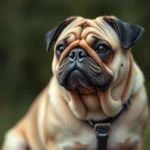
Introduction
Dog breeds come in various shapes, sizes, and temperaments, each with its own unique qualities and characteristics. Among these, the Braque du Bourbonnais stands out as a remarkable breed, known for its hunting prowess and affectionate nature. Understanding different dog breeds, including their history and care needs, is crucial for potential owners who wish to find a perfect match for their lifestyle. This article will provide an in-depth look at the Braque du Bourbonnais, covering its history, physical traits, temperament, care requirements, health considerations, training, and overall compatibility with families and other pets.
Overview of the Braque du Bourbonnais
History and Origin
The Braque du Bourbonnais has a rich history that dates back to the 16th century in France. Originally bred as a versatile hunting dog, it was used primarily for tracking game birds and small game. This breed is named after the Bourbonnais region of France, where it was first developed. The Braque du Bourbonnais is one of the oldest pointing breeds in the country and has played a significant role in the evolution of other hunting breeds.
Despite its historical significance, the breed faced near extinction in the early 20th century. A group of dedicated enthusiasts worked hard to revive it, leading to its recognition by several kennel clubs, including the Fédération Cynologique Internationale (FCI) and the American Kennel Club (AKC). Today, the Braque du Bourbonnais is celebrated not only for its hunting abilities but also for its companionship and loyalty.
Physical Characteristics
The Braque du Bourbonnais is a medium-sized dog, typically weighing between 40 to 60 pounds and standing about 20 to 24 inches tall at the shoulder. This breed exhibits a well-proportioned body with a strong, athletic build, ideal for hunting and outdoor activities.
The coat of the Braque du Bourbonnais is short and dense, offering protection during hunts. It comes in various color combinations, including fawn, white, and chestnut. One of the distinct features of this breed is its long, drooping ears that frame its face, along with a tapered tail that is often docked. The Braque du Bourbonnais has a graceful demeanor that captivates many dog enthusiasts.
Temperament and Behavior
The Braque du Bourbonnais is known for its friendly and loyal disposition. These dogs are social animals that thrive on human interaction and companionship. They are naturally affectionate and tend to form strong bonds with their families, making them excellent pets for households with children.
In addition to their loving nature, the Braque du Bourbonnais is also energetic and requires ample playtime and exercise. They are intelligent dogs, making them relatively easy to train. Their eagerness to please their owners means they respond well to positive reinforcement methods. However, early socialization is essential to ensure they grow up to be well-rounded adults.
Care and Maintenance
Nutritional Needs
Proper nutrition is vital for the overall health and well-being of the Braque du Bourbonnais. A balanced diet should consist of high-quality dog food that meets their protein and energy requirements. Depending on their age, size, and activity level, a Braque du Bourbonnais may require anywhere from 2 to 4 cups of food daily, divided into two meals.
It’s important to monitor their weight and adjust their diet accordingly, as this breed can be prone to obesity if overfed. Some Braque du Bourbonnais may also have dietary restrictions or allergies, so it’s advisable to consult with a veterinarian to determine the best diet for your dog.
Grooming Requirements
The grooming needs of the Braque du Bourbonnais are relatively low due to their short coat. Regular brushing, at least once a week, will help remove loose hairs and keep their coat healthy. Bathing should be done only as necessary, as excessive bathing can strip the natural oils from their skin.
Nail trimming is also essential to prevent discomfort while walking. Additionally, regular dental care, including brushing their teeth and providing dental chews, is important for maintaining good oral hygiene.
Exercise and Activity Levels
As an active breed, the Braque du Bourbonnais requires significant daily exercise to remain healthy and happy. A minimum of 60 to 90 minutes of exercise each day is recommended, including walks, runs, and playtime. Engaging them in activities such as fetch, agility training, or even swimming can help meet their exercise needs.
Mental stimulation is equally important. Puzzle toys, obedience training, and interactive games can keep their minds sharp and prevent boredom, which can lead to destructive behavior.
Health Considerations
Common Health Issues
Like all breeds, the Braque du Bourbonnais is susceptible to certain genetic health issues. Common concerns include hip dysplasia, elbow dysplasia, and certain eye conditions. Regular veterinary check-ups and screenings can help detect and manage these issues early.
Preventative care, including vaccinations and parasite control, is crucial for maintaining your dog’s health. A healthy diet, exercise, and maintenance of a healthy weight can also help prevent many health problems.
Lifespan and Aging
The average lifespan of a Braque du Bourbonnais is typically around 12 to 15 years. As they age, they may start to experience common signs of aging such as reduced energy levels, changes in vision, and joint stiffness. It’s essential to adapt their exercise routine and diet to meet the needs of senior dogs, ensuring they remain comfortable and healthy in their golden years.
Training the Braque du Bourbonnais
Early Socialization
Socialization is critical for all puppies, and the Braque du Bourbonnais is no exception. Exposing them to various environments, people, and other animals during their early months can lead to a well-adjusted adult dog. Positive experiences during this stage help prevent behavioral issues later in life.
Recommended socialization techniques include puppy classes, playdates with other dogs, and visits to different locations. The more experiences your puppy has, the more confident and adaptable they will become.
Basic Obedience Training
Basic obedience training is essential for the Braque du Bourbonnais. Teaching commands such as sit, stay, come, and heel will not only enhance their safety but also strengthen the bond between you and your dog. Consistency is key in training, and using positive reinforcement techniques, such as treats and praise, can significantly improve their learning experience.
Advanced Training and Activities
For owners interested in advanced training, the Braque du Bourbonnais excels in various activities including agility, obedience competitions, and tracking. These activities provide not only physical exercise but also mental challenges, keeping your dog engaged and happy. Continued training throughout their life can help maintain good behavior and enhance their skills.
Living with a Braque du Bourbonnais
Ideal Living Environment
The Braque du Bourbonnais adapts well to different living environments, but they thrive in homes with ample space for exercise. A house with a yard is ideal, but they can also do well in apartments provided they receive sufficient daily exercise.
Creating a safe and stimulating environment is important for this breed. Engaging toys, a secure play area, and opportunities for outdoor activities will ensure your Braque du Bourbonnais remains happy and healthy.
Compatibility with Families and Other Pets
The Braque du Bourbonnais is known for its gentle and friendly nature, making it an excellent choice for families with children. They are typically patient and tolerant, enjoying the company of kids and participating in family activities.
When introducing a Braque du Bourbonnais to other pets, it’s important to do so gradually. Early socialization can help them feel more comfortable with various animals. Providing positive experiences and supervised interactions will ease the adjustment period.
Daily Routine and Lifestyle
Living with a Braque du Bourbonnais involves a commitment to a daily routine that includes exercise, training, grooming, and quality time together. A typical day may include a morning walk, interactive play sessions, training exercises, and plenty of affection.
Balancing work and social activities with the needs of your dog is crucial. Setting aside dedicated time each day for exercise and companionship will ensure your Braque du Bourbonnais remains a happy and well-adjusted member of the family.
Conclusion
The Braque du Bourbonnais is a unique and versatile breed with a rich history, friendly temperament, and impressive hunting capabilities. Understanding their care needs, training requirements, and compatibility with families can help potential owners make informed decisions.
Owning a Braque du Bourbonnais can bring immense joy and companionship into your life. With proper care, training, and love, this breed can thrive and become a cherished part of your family for many years to come.
Frequently Asked Questions (FAQs)
What is the energy level of a Braque du Bourbonnais?
The Braque du Bourbonnais is known for its high energy levels. They require daily exercise and mental stimulation to stay happy and healthy.
Are Braque du Bourbonnais good with children?
Yes, the Braque du Bourbonnais is generally gentle and affectionate, making them great companions for families with children.
How often should I groom my Braque du Bourbonnais?
Grooming needs are minimal due to their short coat. Brushing once a week is usually sufficient, along with regular nail trimming and dental care.
What type of training is best for a Braque du Bourbonnais?
Positive reinforcement training methods work best for the Braque du Bourbonnais. Early socialization and basic obedience training are essential for a well-adjusted dog.
How long do Braque du Bourbonnais typically live?
The average lifespan of a Braque du Bourbonnais is around 12 to 15 years, with proper care and regular veterinary check-ups.









